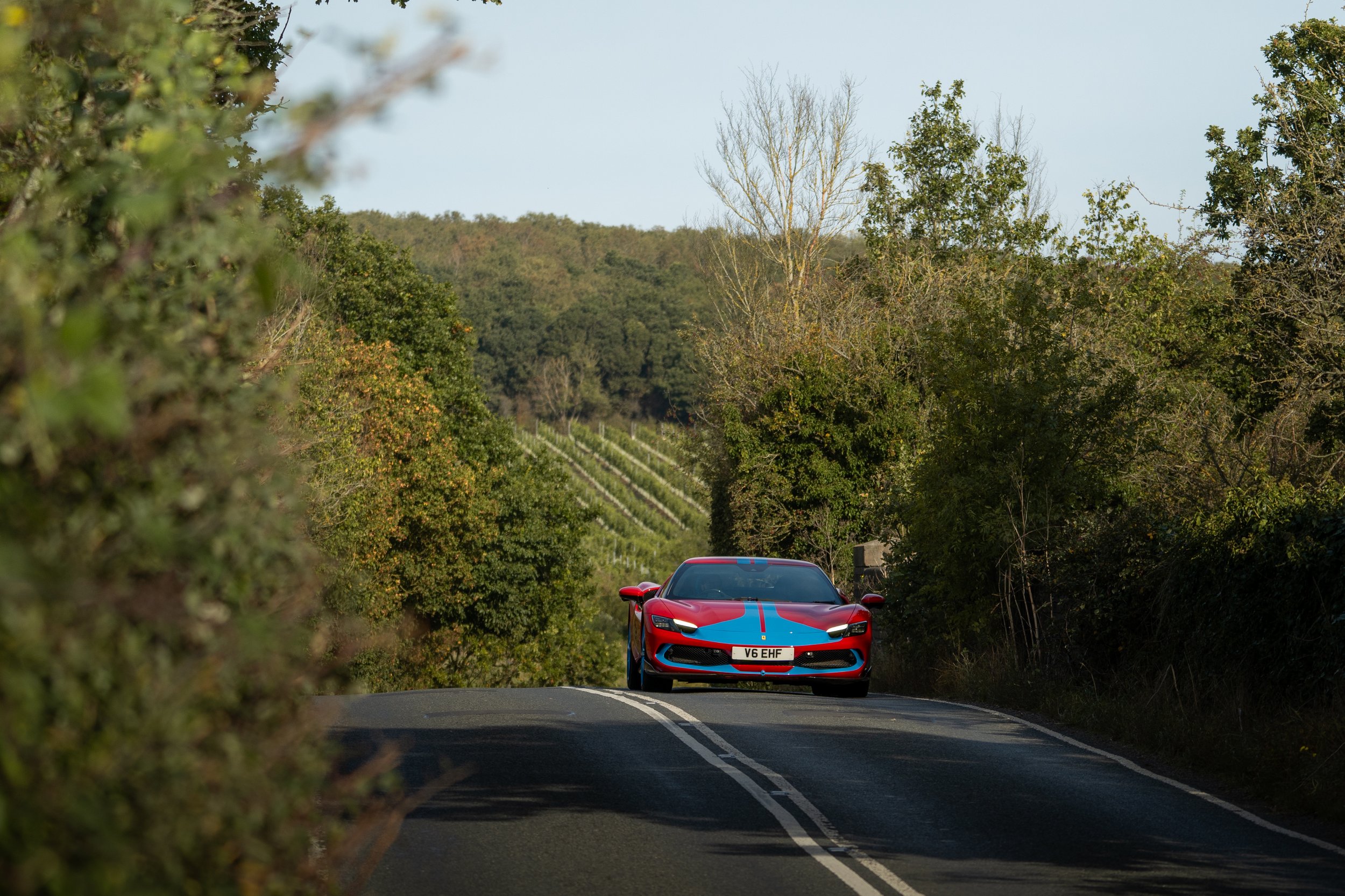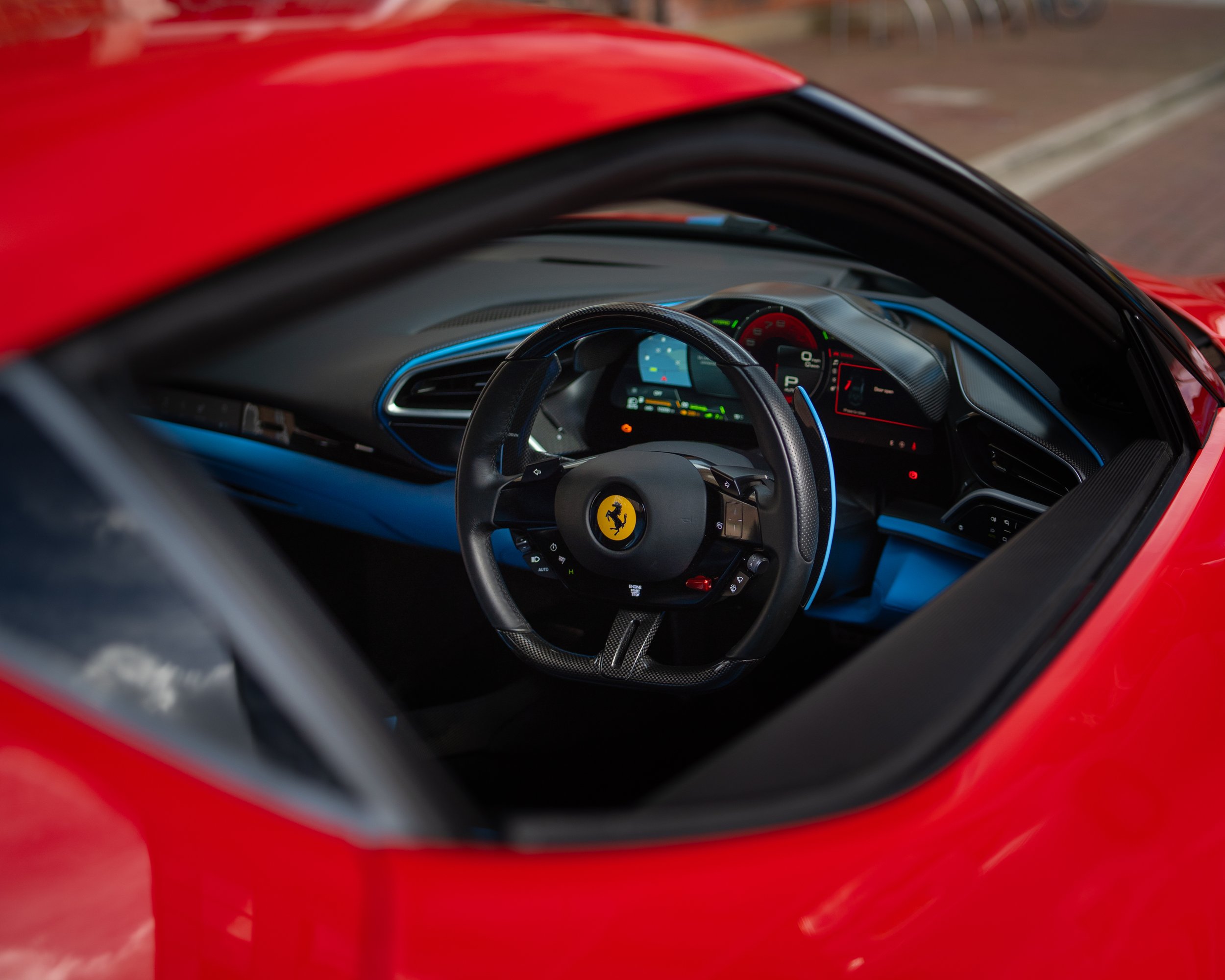ROAD TEST: Ferrari 296 GTB
With the Ferrari F8 now resigned to the history books, it’s the job of the 296 GTB to serve as the entry point to Ferrari’s range of supercars. Is it up to the task?
PHOTOS: Matt Price
Every now and then, a car comes along which forces you to reassess the market place in which it resides. The idea of the hybrid supercar is no longer new, but making the concept work in a package that can be produced in volume is a triumph of modern technology and manufacturing. In this respect, Ferrari is now firmly ahead of the curve with two hybrid supercars in its line-up, the SF90 and our test car for this feature, the 296 GTB. Since the F8 went out of production, the 296 has represented the ‘entry point’ to Maranello’s range of supercars, but with 818bhp at its disposal, any notion of this Ferrari being entry-level-anything is completely absurd.
To say the 296 is fast is like saying Death Valley is merely hot. Both statements are of course correct, but they downplay the truth of the matter by some margin. We’ll get round to what’s powering the Ferrari in a moment because instead I’d like to open by discussing how devastatingly, eye wateringly, ballistically fast it is in a straight line. Zero to 62mph takes 2.9 seconds and the top speed is 205mph which seems like par for the supercar course, but the real headline grabber is the 0-124mph time of just 7.3 seconds. On paper it will trade acceleration stats with a McLaren 765LT, but in practice it feels like a faster, more rampant machine. Peak power comes in at 6,250rpm and it hunts down its 8,000rpm rev limiter with pure vengeance. On a fully open throttle it rearranges your internal organs along with your perception of speed as your brain struggles to keep pace with the rate at which it accelerates. McLaren’s own hybrid supercar, the Artura, is an indecently fast car but wouldn’t see which way the Ferrari went. It’s that bonkers.
The power and performance come curtesy of an all-new twin-turbo 3.0 V6 engine which in isolation puts out 663bhp but is also supported by a 165bhp e-motor which is powered by 7.45kWh battery. The engine’s cylinder banks are positioned at 120 degrees and between them sits the IHI turbos. Hot vees are now the rule rather than the exception when it comes to hybrid supercars because the layout improves engine response by allowing the turbos to spin up faster and run more efficiently. Reduced lag and the instant hit of torque from the e-motor means the 296 possesses a level of the throttle response that’s more than a match for anything naturally aspirated. Initially when you pin the throttle, a burst of torque fires the car forward in an almost EV-like manner, but then the engine really comes in to its own as it relentlessly pursues the red line. And unlike the SF90 which is all-wheel drive, the 296 sends all of its power to the rear wheels which makes for a complete hooligan of a supercar.
Fortunately, Ferrari has created a new selection of driving modes to help contain the fury, or unleash it when the mood takes you. The famous manettino with the Wet, Sport, Race, CT Off and ESC Off driving modes remains, but there’s now a new e-manettino with eDrive, Hybrid, Performance and Qualifying. The 296 has an electric range of 15 miles, and eDrive and Hybrid allow the car to run in its electric only mode with the latter setting allowing you to call upon the combustion engine when you apply enough throttle. Selecting Performance will keep the V6 running at all times with the assistance of the e-motor, and it also recharges the battery while you’re on the move. Qualifying is like Performance mode on steroids; it gives you maximum deployment when you need it but when you come off the throttle or brake, it will also recharge as quickly as possible.
This gives the Ferrari a split personality. While running around just using the e-motor it’s quiet and sociable, but in Qualifying it serves up an animalistic driving experience, especially if you slacken off the stability control. CT Off gives you some slip without letting you slide off the road, although you can feel it working overtime to stop 818bhp from spitting you off in to the nearest hedge. I tried ESC Off on a few occasions and if you have the skill to keep it on the road, it uncovers a chassis which is beautifully balanced and can cut all kinds of shapes with very little provocation from your right foot. But don’t get cocky with it, this is a supercar that will chew you up and spit you out if you take liberties with it.
In truth, you don’t need to play the hero to have a great time behind the wheel. Despite how complex the 296 is, every element comes together to create a cohesive driving experience that leaves you in complete awe of its abilities. The eight speed gearbox riffles through down shifts, the steering is light but rhythmic and doesn’t leave you guessing where the front wheels are, and the Michelin Pilot Sport 4S tyres serve up huge levels of grip. On a tight, twisty road you turn the wheel and the front tyres continue to bite; just when your brain tells you you’re about to run out of grip, the car keeps turning in to the corner. Even on bumpier tarmac, the body remains composed and it feels surefooted, never to be thrown off its line. And with a dry weight of 1,470kg it feels light and agile which is something you don’t normally associate with hybrid vehicles.
It’s a sensational driver’s car, and the beauty is that all the competence is backed by a glorious soundtrack that makes you wonder why we ever lamented the end of the non-hybrid V8. While in development, the Ferrari engineers affectionately nicknamed the V6 ‘piccolo V12’ which is Italian for little V12, and you can tell why. Obviously, it doesn’t possess the sheer majesty of a twelve cylinder engine, but at points in the rev range you can pick out some similarities with Maranello’s most glorious arrangement of cylinders. Something which really took me by surprise is how pronounced the turbos were. Usually, it’s McLaren that goes in for the whooshing and whistling, whereas Ferrari do their best to cover up the fact that they’ve had to bolt on turbos. However, the tone of the V6 is supplemented by some serious wastegate chatter which adds another layer of lough-out-loud fun to the proceedings. If you were worried that downsizing and hybridisation would ruin the supercar then the 296 debunks that theory. It brims with personality.
Another benefit of going hybrid is fuel economy – not that Ferrari customers concern themselves with such matters – but if you’re a little eco conscious or are someone who doesn’t like to wake the neighbours at 7am, then being able to zip around on electric power will help you sleep better at night. What’s most impressive though is how seamlessly the combustion engine shuts down and hands drive over to the e-motor when you’re in hybrid mode – there were times when I didn’t even notice the switchover had happened, such is the smoothness of the action. And apart from some tyre roar, the 296 is remarkably refined to the point where you could use it daily. Just don’t option the racing harnesses that our test vehicle came with if you are going to use it regularly. You’ll also need to spend some time learning the infotainment system and how to use the touch sensitive controls on the steering wheel because Ferrari appears to have forgotten the benefits of good, old fashioned buttons. Once you’ve figured it all out though, you’ll just rely on Apple CarPlay for anything phone, maps or media based. As for the rest of the interior, it’s beautifully made with quality materials, but this is a Ferrari so you expect nothing less for your £245,000 before options.
As increasingly more performance vehicles turn to hybrid powertrains, this idea that electrification is a thing of the future is no longer the case. It’s here now, and Ferrari is embracing it in a way that’s not of detriment to the supercar. The F8 was a fabulous machine, but the 296 is proof that if done correctly, hybridisation can enhance the supercar in nearly every way, to the point where it blurs the lines between super and hyper. A decade ago, LaFerrari came along and showed the world that electrification can be used not for environmental purposes, but to make performance vehicles faster. That was a limited run special that cost £1million, but just a decade later you can buy a series production Ferrari with nearly as much performance and a more advanced hybrid system for a quarter of the money. That rate of progress is deeply impressive, but not quite as impressive as the 296 which is undoubtedly one of the very best cars on sale right now.










